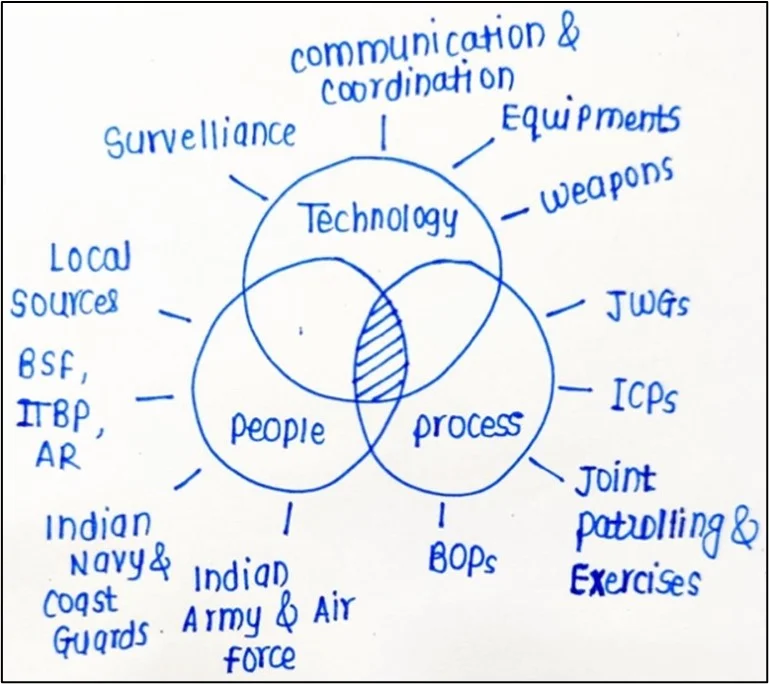Answer:
| Approach:
Introduction
- Begin with a brief overview of the complexity of border management in India.
Body
- Discuss the key challenges in managing India’s borders.
- Identify and mention the strategies to address these challenges.
Conclusion
- Conclude by emphasizing that effective border management is a continuous process that requires strategic planning, technological upgrades, infrastructural improvements, diplomatic efforts, and inter-agency coordination.
|
Introduction:
Border management in India is a complex task due to its unique geographical diversity and strained relations with certain neighboring countries. Effective management is crucial for national security, peaceful international relations, and curbing illicit activities.
Body:
Challenges in Border Management:
- Difficult Terrain:
- India shares its borders with countries across diverse landscapes – ranging from dense forests with Bangladesh and Bhutan, deserts with Pakistan, to mountainous terrains with China and Nepal.
- This geographical diversity presents logistical challenges.
- Hostile Relations:
- Strained relations with nations like Pakistan and China result in frequent border disputes and tension, complicating management.
- Porosity:
- Porous borders, particularly with Nepal, Bangladesh, and Myanmar, facilitate illegal activities like smuggling, human trafficking, and infiltration.
- Infrastructure Deficiencies:
- Lack of adequate infrastructure like roads, fencing, and surveillance equipment hinders effective border patrolling and monitoring.
Strategies for Effective Border Management:

- Technology Integration: Advanced surveillance technologies like drones, ground sensors, high-resolution cameras, thermal imagers, aerostats, and satellite imagery can boost border security. For instance, India is deploying a comprehensive integrated border management system (CIBMS) along its borders.
- Infrastructure Development: Enhancing border infrastructure like roads, fencing, and border outposts can improve patrolling and deter illicit activities.
- Improved Diplomacy: Resolving border disputes through diplomatic dialogues and agreements can ease border management. For instance, the Land Boundary Agreement with Bangladesh in 2015 resolved long-standing border issues.
- Coordinated Efforts: The implementation of a coordinated border management (CBM) approach in India involves multiple agencies like the Border Security Force (BSF), intelligence agencies, and local administrations for effective border management.
Conclusion:
Despite the challenges, effective border management is attainable through strategic planning, technological advancement, infrastructural development, diplomatic efforts, and coordinated inter-agency operations. It is a continuous process requiring regular reviews and updates to address emerging challenges.
